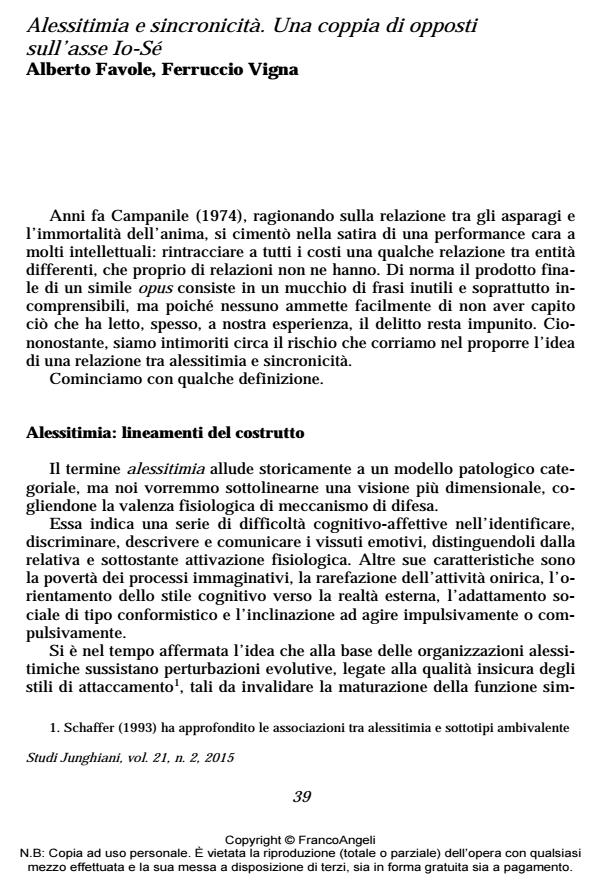Alexithymia and Synchronicity. A pair of opposites on the Ego-Self Axis
Journal title STUDI JUNGHIANI
Author/s Alberto Favole, Ferruccio Vigna
Publishing Year 2016 Issue 2015/42
Language Italian Pages 26 P. 39-64 File size 113 KB
DOI 10.3280/JUN2015-042004
DOI is like a bar code for intellectual property: to have more infomation
click here
Below, you can see the article first page
If you want to buy this article in PDF format, you can do it, following the instructions to buy download credits

FrancoAngeli is member of Publishers International Linking Association, Inc (PILA), a not-for-profit association which run the CrossRef service enabling links to and from online scholarly content.
The authors discuss the transnosographic meaning of alexithymia, which is heuristically interesting in the clinical setting and capable of bridging different disciplinary approaches. From the Jungian perspective, alexithymia can be described as a "loss of Anima", the latter being the function that relates the Ego to the imaginative, emotional and somatic components. While alexithymia therapy can be seen as an attempt to progressively mend the disconnections that arise between psyche and soma, it can also be illuminating to ask what function may be fulfilled by the appearance of synchronistic events. Such events, acausal, psychophysical, destabilizing and affectively intense, are in sharp contrast with the unilate¬ral nature of alexithymic function. Accordingly, the authors suggest that the constructs of alexithymia and synchronicity can be regarded as a pair of opposites.
Keywords: Alexithymia, synchronicity, acausality, psychoid, Self, transitional object
Alberto Favole, Ferruccio Vigna, Alessitimia e sincronicità. Una coppia di opposti sull’asse Io-Sé in "STUDI JUNGHIANI" 42/2015, pp 39-64, DOI: 10.3280/JUN2015-042004